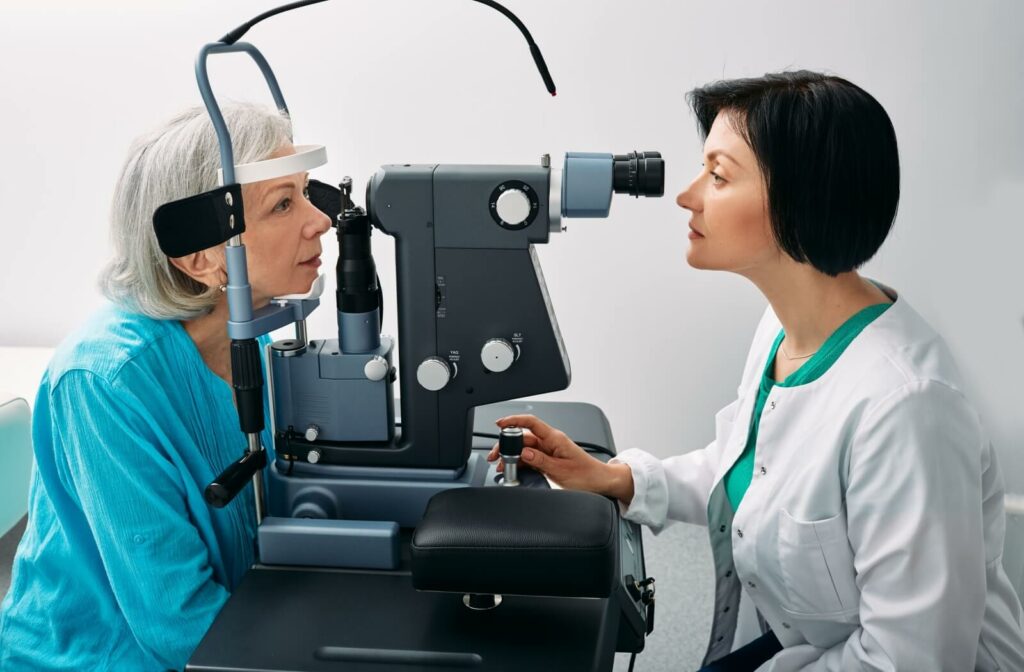Check Out Advanced Services at Opticore Optometry for Eye Health
Check Out Advanced Services at Opticore Optometry for Eye Health
Blog Article
Checking Out the most up to date Technical Improvements in Optometry and What They Mean for Optometrists
From the precision of Optical Coherence Tomography to the nuanced insights used by AI-driven analysis devices, these innovations are establishing brand-new standards in individual analysis and therapy. As these innovations permeate the technique, eye doctors are encountered with the challenge of embracing these devices to boost client outcomes.
Developments in Diagnostic Tools
Progressing the area of optometry, innovations in diagnostic devices have reinvented the method eye care specialists assess and identify visual impairments and eye conditions. The previous years has actually witnessed considerable technological improvements, making it possible for more exact and extensive examinations.
An additional secret development is the introduction of advanced corneal topography systems, which map the surface area curvature of the cornea with precision. These tools are especially beneficial for fitting contact lenses and diagnosing corneal problems. Digital retinal imaging has transformed conventional ophthalmoscopy, using thorough, scenic sights of the retina that facilitate complete aesthetic assessments.
The development of wavefront aberrometry has additionally been important, making it possible for the analysis of refractive mistakes with unrivaled accuracy (Eye Doctor Optometrist). This technology helps in tailoring restorative lenses and improving medical end results for refractive surgical treatments. Collectively, these diagnostic improvements empower eye doctors to supply premium individual care, making sure very early intervention and tailored treatment strategies, ultimately enhancing aesthetic health and wellness results
AI in Patient Administration
Structure on the foundation of sophisticated analysis tools, the incorporation of synthetic intelligence (AI) in patient administration represents a transformative leap for optometry. AI systems are increasingly used to enhance performance, precision, and customization in individual care.
Moreover, AI-driven systems help with streamlined person interactions and management processes. Automated scheduling, digital appointments, and personalized follow-up strategies not only improve patient contentment yet also maximize time monitoring for professionals. These systems can triage clients based upon the necessity of their problems, making sure that those in crucial demand get punctual interest.
Furthermore, AI boosts decision-making by giving eye doctors with evidence-based recommendations and treatment paths. By integrating data from digital health and wellness records, AI devices supply understandings that inform clinical choices, lowering the risk of mistakes and enhancing client results. As AI proceeds to develop, its duty in individual management will likely broaden, reshaping the landscape of optometric treatment.
Breakthroughs in Retinal Imaging
In the realm of optometry, retinal imaging has experienced amazing technical innovations that are improving analysis abilities and person treatment. Innovations such as Optical Comprehensibility Tomography (OCT) and fundus digital photography have actually transformed just how eye doctors imagine and evaluate the retina. OCT, particularly, supplies high-resolution, cross-sectional photos of the retina, enabling the thorough evaluation of its layers. This capacity is important for early discovery and monitoring of problems like glaucoma, diabetic retinopathy, and age-related macular deterioration.
Improved imaging techniques like OCT angiography are more refining diagnostic precision. Opticore Optometry. Such improvements promote the recognition of minute retinal changes that can signify condition development.
Furthermore, developments in artificial intelligence are increasing retinal imaging by making it possible for automated analysis of huge datasets. These systems aid eye doctors in recognizing patterns a measure of pathology, therefore enhancing diagnostic accuracy and performance. Collectively, these advancements are transforming retinal imaging right into a keystone of contemporary eye treatment, enhancing results and broadening therapeutic possibilities.
Teleoptometry's Growing Duty
Teleoptometry is significantly ending up being a crucial component of eye treatment, driven by improvements in digital communication and diagnostic tools. This is especially advantageous in country and underserved areas where accessibility to specialized eye care is often minimal.
The integration of expert system (AI) more enhances teleoptometry, making it possible for the evaluation of aesthetic information and aiding in the discovery of eye problems such as glaucoma and diabetic person retinopathy. AI-powered algorithms can quickly interpret complicated imaging information, supplying optometrists with beneficial understandings that bolster medical decision-making.
In addition, teleoptometry sustains continuity of treatment via seamless integration with electronic wellness records (EHRs), enabling optometrists to maintain detailed client histories. When consulting with different professionals., this ensures that people receive tailored and regular treatment even.
Despite these benefits, challenges stay, consisting of guaranteeing information safety and taking care of person expectations. Nevertheless, teleoptometry stands for a significant stride towards more this website accessible, efficient, and patient-centered eye care. As technology evolves, its role is positioned to increase further.

Future Patterns in Eye Care
A myriad of innovative patterns is set to improve the future of eye treatment, driven by technical innovations and the evolving requirements of individuals. One significant fad is the integration of fabricated knowledge (AI) in diagnostics, which assures to boost the accuracy and performance of eye evaluations. AI algorithms can evaluate vast quantities of information from retinal photos, possibly detecting conditions like diabetic retinopathy and glaucoma earlier than typical methods.
In addition, individualized medicine is obtaining grip in optometry, with hereditary testing educating customized therapy plans. This technique aims to enhance client results by customizing treatments to private genetic profiles. Wearable modern technology, such as smart get in touch with lenses, is likewise coming up, providing real-time monitoring of intraocular stress or sugar degrees, hence supplying constant understandings right into systemic and eye wellness.
The adoption of enhanced fact (AR) and online fact (VIRTUAL REALITY) in training and patient education is another emerging fad. These modern technologies use immersive experiences that can improve understanding and skills both for clients and eye doctors. As these fads progress, eye doctors need to stay abreast of technical innovations to supply sophisticated treatment, making certain better person outcomes and contentment in the dynamic landscape of eye care.
Final Thought
Jointly, these diagnostic developments equip optometrists to supply superior client treatment, guaranteeing very early intervention and customized internet treatment strategies, eventually boosting visual wellness outcomes.

As these modern technologies continue to progress, optometrists should adapt and include them right into technique, navigate here eventually optimizing operations efficiency and boosting the standard of eye care provided to patients.
Report this page